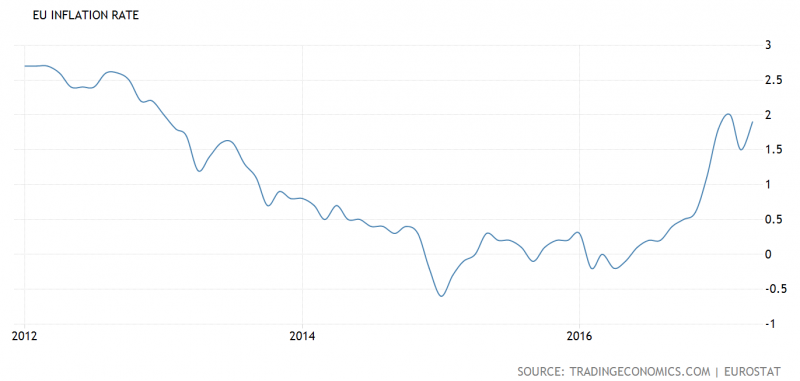Reading time: 1.20 min.
Eurozone inflation has remained relatively low over the past few years. However, within a mere 12 months, the inflation rate has increased rapidly and is set to breach the 2% long-term limit set by the European Central Bank.
How does inflation affect your savings?
The rapid increase of inflation will deliver a serious blow to all traditional savings. While the European Central Bank kept interest rates low, and the banks are basically not paying interest on any savings accounts, inflation was not considered to threaten the purchasing power of savings, resulting in a continued increase in savings volumes.
The recent inflationary change in the economic environment has exposed depositors to a remarkable threat – while the fiscal policy of the European Central Bank still keeps the interest rates close to zero, increasing inflation (close to 2% on average and reaching 3% in Estonia) is starting to eat away the value of savings accounts.
What does it mean in terms of numbers? Germans, for example, have in excess of 5 trillion euros of savings, and the current 2% inflation will reduce the value of their savings by more than 100 billion euros per year. Estonians are even worse off as their 7 billion euros of private savings will take a 200 million euro annual hit from an almost 3% inflation rate.
Investing is more important than ever
As we do not see any signs that indicate an increase in base interest rates in the near future, anyone interested in maintaining purchasing power of their savings should reconsider their saving and investing principles.
Investing in stocks or equity index funds has always been a popular option, and you can expect your long-term returns to be around 7 – 8% per annum.
Investing in real estate is one of the more popular strategies due to its transparency, stability, and resistance to inflation. Modern real estate crowdfunding platforms (like crowdestate.eu) team up with professional real estate developers and make investing in real estate accessible to anyone. There are different views on optimum real estate allocation, but the general suggestion is to keep around 40% of your assets in real estate. Depending on the capital type and risk level of the project, real estate investments could offer up to a 20% annual return.
The third alternative is investing in unsecured consumer loans or financing short term invoices. Invoice financing could offer up to a 10% annual yield while “person to person” or p2p lending could result in around a 10 – 12% annual interest rate before credit losses.
If you care about maintaining or increasing the purchasing power of your savings, depositing them with banks might not be the best idea. The investment world is wider than ever before and several attractive, previously limited asset classes have become available to everyone.
Click here to become a real estate investor!


